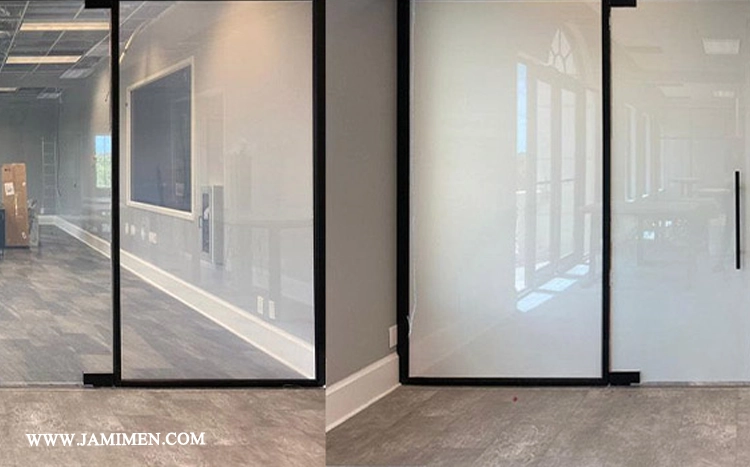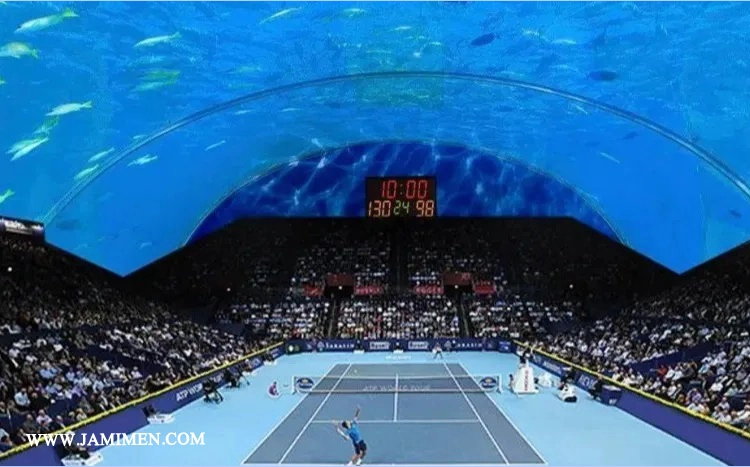What is the Reflex Glass
Reflex glass is a variant of glass utilized in the construction of buildings, windows, balconies, and various other applications.

The Evolution of Glass in Modern Architecture
Over the years, the concept of "home" has undergone significant changes. Today, homes possess more personality, identity, and utility compared to the past. Urban homes are now constructed to be much more open and creative to harmonize with the urban dwellers' identity. However, many old problems persist, with numerous homes suffering from improper window placement and unattractive designs. Meanwhile, our energy consumption has significantly increased due to reliance on cooling and heating systems. Energy efficiency is crucial, and one way to achieve it in urban structures is through a shift in glass usage.
Reflective Glass
Reflective glass, also known as mirror or one-way glass, is a special type of glass with a metallic coating that reflects a significant portion of sunlight and reduces heat transfer. This guide will explore the advantages and applications of reflective glass.

Reflective glass offers numerous benefits, making it popular in modern construction and architecture. Reflecting a considerable portion of sunlight prevents heat buildup inside buildings. Did you know that over 90% of heat accumulation in modern homes occurs through windows and doors? You can opt for reflective or tinted glass to prevent turning your home into a sauna. Reflective glass reduces heat accumulation, creating a noticeable temperature difference for the building's occupants and promoting a sense of comfort. It absorbs and reflects substantial outside heat during summer, keeping you cool. Moreover, you can significantly reduce your utility expenses by reducing the use of artificial lighting and heating/cooling systems.
This, in turn, leads to a decreased need for cooling and ventilation systems, reducing costs. Another advantage of reflective glass is the reduction of glare, enhancing visual comfort for occupants. It also enhances safety and privacy, allowing only those inside the building to see outside, which is especially important for office and residential buildings.
Protecting Against Sunlight
Excessive sunlight exposure can cause more harm than you might think. Did you know that overexposure to sunlight can damage your eyes? By using reflective glass, you can avoid these damages. Reflective glass affects Visible Light Transmission (VLT), reducing solar radiation while allowing natural light to enter. It also reflects significant harmful solar radiation, which greatly contributes to eye comfort.
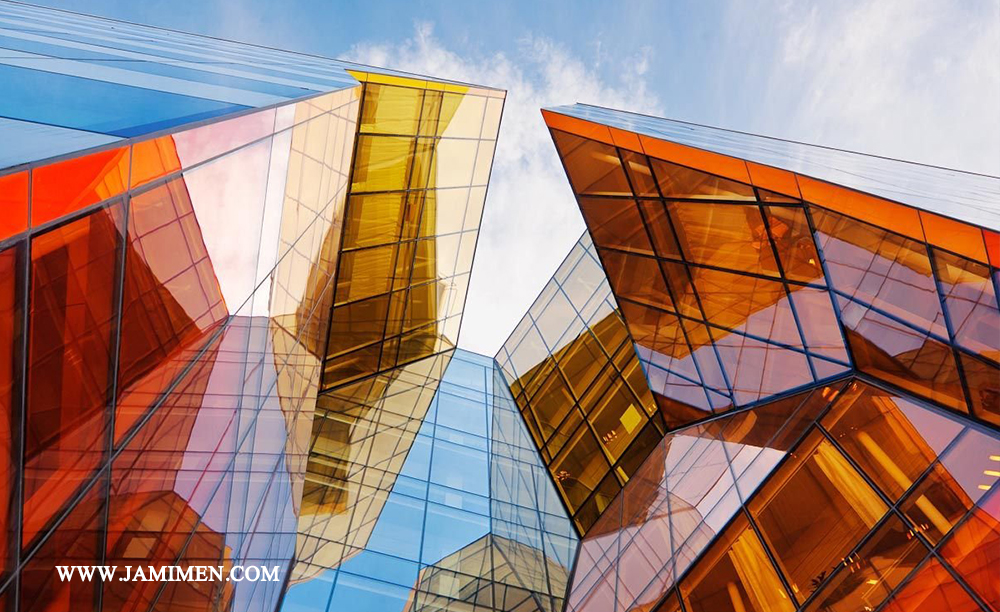
Applications of Reflective Glass
Reflective or mirror glass finds numerous applications in contemporary architecture and construction, some of which we'll explore here:
- Commercial Buildings: Reflective glass is extensively used in offices, shopping centers, and hotels due to its energy-saving and aesthetic properties, making it a popular choice for modern and sustainable buildings.
- Residential Buildings:Reflective glass is used in many residential buildings to achieve higher energy efficiency and preserve privacy. It can be used in windows, main doors, and large light openings, allowing residents to enjoy sufficient natural light while maintaining privacy.
- Automotive Industry:Reflective glass is used in the automotive industry for manufacturing car windows and windshields. Its reflective properties prevent interior heat buildup.
- Greenhouses:Reflective glass is used in greenhouses to control the amount of incoming light, maintaining optimal conditions for plant growth and preventing heat buildup inside the greenhouse.
In conclusion, reflective or mirror glass offers a range of benefits and applications in modern architecture and construction, contributing to energy efficiency, comfort, and aesthetics in urban environments.
Reflective Glass: A Versatile Solution in Modern Construction
Reflective or mirror glass offers various advantages and applications, making it a versatile and valuable material in modern construction and architecture. Features such as energy efficiency, glare reduction, and privacy preservation make it an attractive choice for residential and commercial projects. With reflective glass, architects can create sustainable and beautiful structures.
Types of Reflective Glass
Reflective glasses are generally produced in different colors, including silver, smoked, gold, bronze, green, and blue.
- Silver Reflective Glass: This type is more popular among other reflective glasses due to its color and higher reflectivity properties, even being commonly referred to as mirror glass. The double-glazed variant of silver reflection glass has a much higher light transmission property than its regular type.

- Smoked Reflective Glass: This color also enjoys high popularity among buyers. Smoked reflective glass has gained its position due to its ability to restrict sunlight from entering the building's interior. It is suitable for buildings and facilities where the type and volume of daily light entry must be controlled.
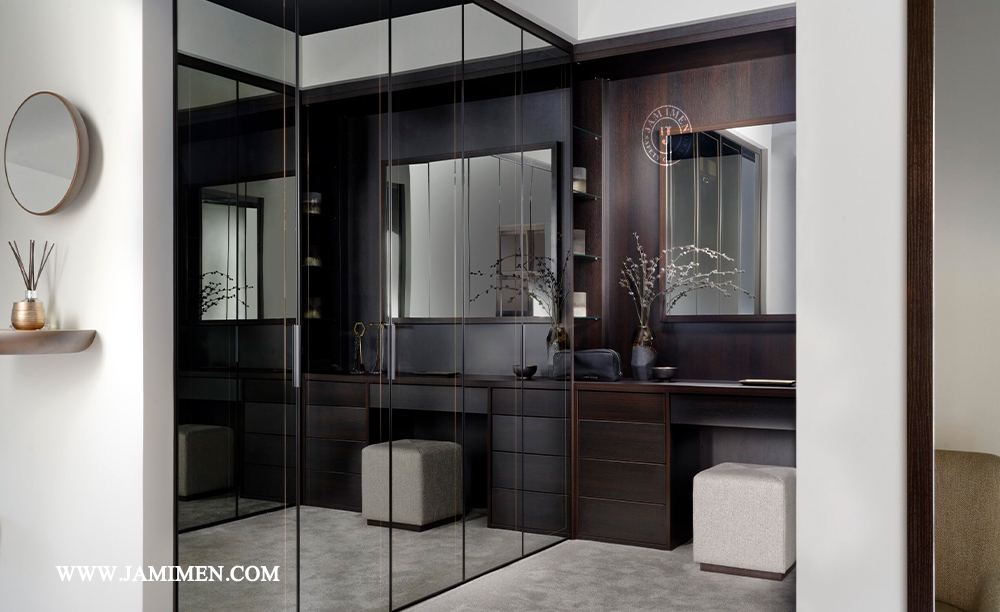
Gold Reflective Glass: With its beautiful appearance, this type of reflective glass attracts special attention and popularity among buyers. On the one hand, it may be a more suitable choice for areas that do not require a reduction in incoming light, such as colder regions, since it does not create significant obstruction against sunlight entering the interior space.


Difference Between Reflective Glass and Ordinary Mirror
An ordinary mirror is cloudy and matte, created through a wet coating process, while reflective glass has a transparent and clear coating on its outer layer. This coating reflects light and can create various levels of reflection on different surfaces.
Best Type of Reflective Glass
Perhaps among various types of reflective glasses, it is worth mentioning "Superior Reflective Glass." Superior reflective glass reduces solar radiation and creates significant visual and thermal comfort in the interior space. This type is available in various sizes and shapes.
Reflective Tempered Glass
Reflective tempered glass combines the features of tempered glass and reflectivity simultaneously. Tempered glass, which becomes significantly strengthened through sudden and repeated heating and cooling, has a very strong outer layer, and a reflective or mirror-like coating is added to its outer layer.
Reflective Glass Pricing
The price of glass depends on its dimensions, thickness, whether it is tempered or not, whether it is double-glazed or not, and the method of its production and processing, all of which affect the final price. The two main determining factors of reflective glass pricing are its structure and thickness.
Innovative Applications of Reflective Glass:
In addition to the conventional uses of reflective glass in building facades, doors, and windows, innovative applications of this type of glass are emerging. Here are some of them:
- Ceilings and Skylights:
- Control of incoming light into the building
- Creating bright and pleasant spaces
- Energy savings
- Interior Decoration:
- Creating modern and stylish spaces
- Making spaces appear larger
- Increasing light reflection and brightness
- Automotive Industry:
- Front windshields and windows
- Reducing interior heat in vehicles
- Enhancing the beauty and attractiveness of automobiles
- Greenhouses:
- Controlling the amount of incoming light
- Maintaining optimal conditions for plant growth
- Increasing greenhouse productivity
- Solar Panels:
- Increasing sunlight absorption
- Improving the efficiency of solar panels
- Generating clean energy

Advantages of Using Reflective Glass in Innovative Applications:
- Energy Savings: Controlling incoming light and reflecting sunlight prevents spaces from overheating excessively.
- Environmental Protection: Reducing energy consumption and producing clean energy contributes to environmental preservation.
- Enhancement of Beauty and Attractiveness: It provides spaces with a modern and stylish appearance.
- Increased Efficiency: In applications such as greenhouses and solar panels, it helps to increase system efficiency and performance.
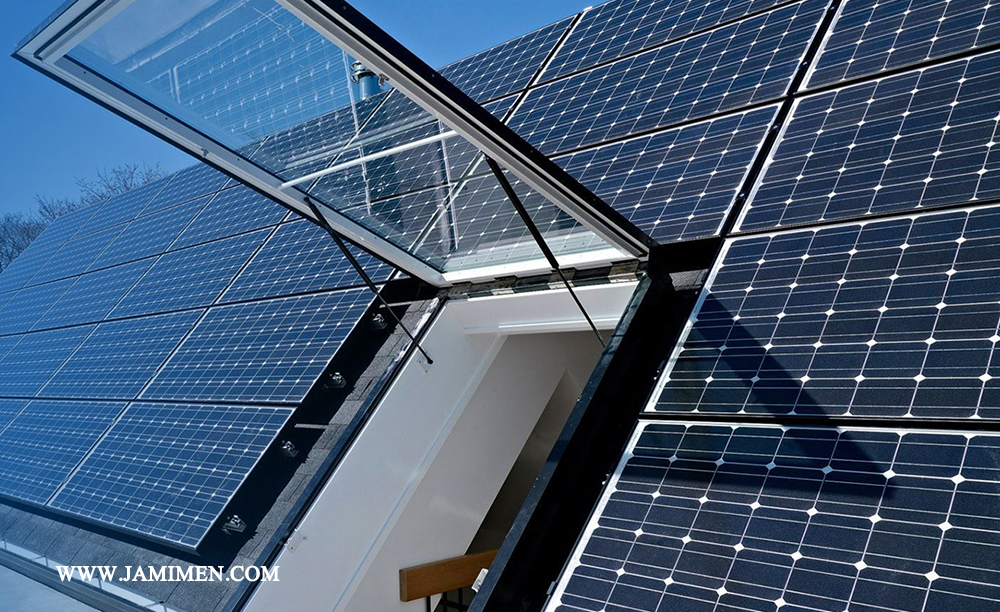
The Role of Reflective Glass in Smart City Development:
Reflective glass plays a crucial role in sustainable architecture and contributes significantly to the development of smart cities. Below, we examine the capabilities of using reflective glass in smart building construction and its impact on enhancing citizens' quality of life:
Capabilities of Using Reflective Glass:
- Light and Temperature Control:
- Automatic regulation of light and temperature inside buildings
- Increased comfort for residents
- Energy savings
- Energy Generation:
- Integration of solar panels into reflective glass
- Clean energy production
- Reduced dependence on fossil energy sources
- Security:
- Utilization of anti-theft reflective glass
- Enhanced building security
- Communications:
- Utilization of reflective glass as communication antennas
- Improved speed and quality of communications

Impact on Quality of Life:
- Air Pollution Reduction:
- Decreased energy consumption and greenhouse gas emissions
- Increase in Green Spaces:
- Implementation of green roofs and green walls
Examples of Successful Experiences:
- Seoul, South Korea:
- Use of reflective glass in building facades to reduce energy consumption
- Incorporation of solar panels embedded in reflective glass for electricity generation
- Singapore:
- Deployment of UV-resistant reflective glass to protect residents from harmful solar radiation
- Implementation of smart reflective glass for light and temperature regulation
In conclusion, using reflective glass in smart cities efficiently improves citizens' quality of life, environmental preservation, and sustainable development.
The Use of Reflective Glass in Artistic Architecture:
With its unique characteristics, Reflective glass has garnered attention as a creative element in artistic architecture by artists and designers. Below, we explore the use of reflective glass by artists and architects as an influential element in their works, along with introducing examples of artistic and architectural pieces that the use of reflective glass has enhanced:
Applications of Reflective Glass in Artistic Architecture:
- Creation of Dynamic and Moving Facades:
- Reflection of light and images of the surrounding environment
- Instilling a sense of movement and dynamism in the facade
- Creation of Illusive and Mysterious Spaces:
- Reflection of images in a manner that distinguishes reality from reflection
- Crafting a unique and enigmatic space
- Enhancement of Depth and Breadth Sensations:
- Reflection of surrounding environment images in glass
- Creating a sense of larger and deeper space
- Creation of Colorful and Visual Diversity:
- Utilization of reflective glass with various colors
- Introducing diversity and beauty in the facade
Examples of Artistic and Architectural Works:

- "Cloud Gate" Sculpture by Anish Kapoor:
- Use of reflective glass to create reflections and distortions of surrounding images
- Establishing an illusive and mysterious atmosphere
- Heydar Aliyev Cultural Center in Baku:
- Incorporation of reflective glass in the building facade
- Creating a dynamic and moving space
- "Turning Torso" Telecommunications Tower in Malmo:
- Utilization of reflective glass for light reflection and surrounding image reflection
- Generating a sense of depth and breadth
- Guangzhou Opera House in China:
- Integration of reflective glass to introduce color and visual diversity
- Crafting a beautiful and unique space
In conclusion, using reflective glass in artistic architecture is a creative solution for creating beautiful and influential artistic and architectural works.
The Use of Reflective Glass in Commerce and Marketing:
Today, we are witnessing an increasing use of reflective glass in commercial industries and marketing. With its unique characteristics, this type of glass is a powerful tool for attracting customers' attention and increasing sales. Below, we delve into the growing trend of using reflective glass in commerce and marketing, along with its significance in attracting customers, and we present successful examples of its use in exhibitions, shops, and commercial spaces:
Benefits of Using Reflective Glass in Commerce and Marketing:
- Attention-Grabbing:
- Reflection of light and images of the surrounding environment
- Creating a sense of curiosity and desire to see more
- Creation of Modern and Stylish Spaces:
- Use of reflective glass with various colors
- Enhancement of the visual appeal of the space
- Enhancement of Space Perception:
- Reflection of images of the surrounding environment on glass
- Creating a sense of depth and breadth
- Creation of Privacy:
- Inability to see inside from the outside
Successful Examples:
- Exhibitions:
- Use of reflective glass in booths to attract visitors' attention
- Reflection of light and images of products for better display
- Shops:
- Use of reflective glass in shop facades to attract passersby
- Use of reflective glass in showcases for better product display
- Commercial Spaces:
- Use of reflective glass in restaurants, hotels, and office spaces to create modern and stylish environments
Considerations for Using Reflective Glass in Commerce and Marketing:
- Choosing the Right Color:
- The reflective glass color should suit the type of use and the space used.
- Lighting:
- Proper lighting can enhance the effectiveness of reflective glass.
The Use of Reflective Glass in Commerce and Marketing:
- Visual Content:
- Using attractive images and designs on reflective glass can attract customers' attention.
In conclusion, using reflective glass in commerce and marketing is presented as a creative solution to attract customers, increase sales, and create modern and stylish spaces.
Conclusion:
With its unique features, Reflective glass is introduced as an efficient and creative element in various fields, including building facades, architecture, decoration, the automotive industry, greenhouses, solar panels, etc. This type of glass has numerous benefits, such as energy saving, environmental preservation, enhancement of beauty and attractiveness, increased efficiency, etc.
In this article, we examined the introduction and types of reflective glass, innovative uses of reflective glass in sustainable architecture, development of smart cities, artistic architecture, commerce, and marketing, and introduced successful examples of its use in each field.
Reflective glass plays a key role in improving the quality of life, preserving the environment, and promoting sustainable development as a novel and efficient solution.
Tips for Choosing and Using Reflective Glass:
- Before choosing and using reflective glass, consultation with specialists in this field is necessary to ensure its suitability for the intended application.
- In some cases, using a specific type of reflective glass with special features may be necessary.
- Attention should be paid to local regulations and laws regarding building facades and other applications.
- Jam Imen, as a manufacturer and provider of various types of tempered reflective glass, is ready to respond and provide consultation to customers.
With creativity and innovation, reflective glass can be used in new and unexpected applications, leading to remarkable results.




